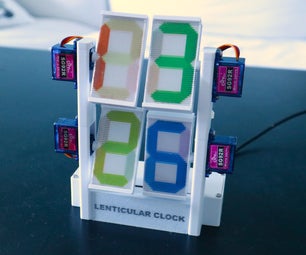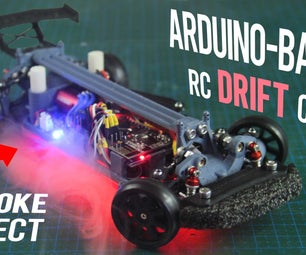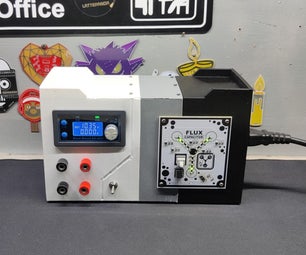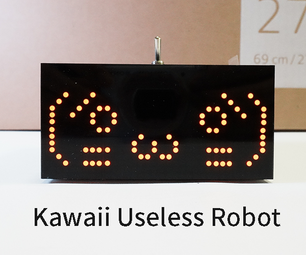Introduction: Magnetic Gorillapod
I recently bought a new camera, and with it the GorillaPod Hybrid, meant for cameras up to 2.2 pounds (35.2 ounces). My camera is only 5.2 ounces and the GorillaPod Original is meant for cameras up to 11.5 ounces, but the joints wear out after time and it starts to get worse at keeping its shape, so I decided to get the beefier GorillaPod Hybrid.
While looking at Joby's line of GorillaPods, I saw that there was a GorillaPod Magnetic. It was just like the original, but with magnetic feet. Cool, except it was their only magnetic GorillaPod and it was for the 11.5 ounce camera range. I wanted my GorillaPod Hybrid to have magnetic feet, so I looked on Amazon and found some really powerful magnets that would fit in the feet and some white Sugru to cover them up and waited for it all to come.
Step 1: Step 1: Making Sure Everything Looks Right
The gray part of the feet is a little over 5/8" tall and the magnet is 3/8" tall by 1/2" in diameter, so everything should fit just fine.
I did not know beforehand what the dimensions of the feet would be, but I had a fairly good idea from another GorillaPod that I owned, so when I looked for magnets I just found ones that would have definitely fit in my other GorillaPod's feet.
Step 2: Step 2: Drilling Out the Feet
I found a piece of gray PVC that was just about the right inside diameter to securely hold the feet while I drilled them, but because it was a little too tight, I cut a slit in the side of it to allow it to expand just a little bit. Next I cut 1/4 of the pipe off so the legs could bend out and let the bottom of the pipe sit on the table of the drill press (See pictures).
Using a 1/2" forstner bit, I drilled into the feet so the top of the drill bit was just covered (the bit was about 3/8" tall). I wanted the holes to be perfectly centered in the feet, but my makeshift pipe clamp did not really allow me to do that. It ended up being just fine and looking fine, but I suppose it would have looked nicer had I spent the time to make a more elaborate clamp to hold the feet perfectly centered.
Step 3: Step 3: Epoxying the Magnets Into the Feet
Using some relatively coarse sandpaper, I roughed up the magnets so the epoxy would adhere to them better. I then dispensed the epoxy and used a scrap piece of wood to stir the two parts together. Using that same stick I slopped the epoxy into the holes and stuck the magnet in, allowing the epoxy to seep out from around the magnet. I wiped off that epoxy as soon as the magnet was pressed in so it wouldn't cure and leave ugly looking bumps on the feet.
Now, I did not really think of this when I was putting the magnets in, but see how there is a hole running through the foot in the second picture? That hole runs all the way through and to the joint where the foot connects to the leg. I didn't cover these holes when I put the epoxy in, so now the joints where the feet connect to the legs are totally stuck on mine. Don't forget to cover these holes before you put the epoxy in.
The directions on the epoxy said to let it sit for 20 minutes before you disturbed it, so I waited 20 minutes and then proceeded with the next step.
Step 4: Step 4: Adding Sugru to the Feet
Magnets are brittle and they will scratch up metal surfaces if you put them directly on them, so I decided to add some Sugru to not only protect the magnets, but also the surfaces they would be touching.
This step is pretty straightforward. It doesn't take very much Sugru at all, but cover up the magnets and smooth it out and let it sit the full 24 hours for the Sugru to cure.
You should remember that the thicker you put on the Sugru, the more space there will be between the magnet and the metal surface you are putting it on, and therefore the more the pull strength with be decreased. Cover the magnet with as little Sugru as possible.
Step 5: Step 5: Testing It Out!
Here are just a few pictures from my various test locations. The magnet in just one of the feet was strong enough to hold the weight of the camera as well as the GorillaPod, but I would recommend that you use all 3 of the feet to attach your camera to anything. I'm not sure how well this would work with larger cameras, but the magnets are very strong.
Step 6: Conclusion and Costs
I am very satisfied with this small improvement on an already useful GorillaPod. It was well worth the cost.
Here's a quick breakdown of the costs:
GorillaPod Hybrid Gray - $28.00
3 x 5g White Sugru - $12.00 (less that $1 actually used)
10 16.8 pound hold strength magnets - $12.95 ($3.89 for 3 magnets)
Loctite Epoxy - $5.10 (about $0.20 in epoxy actually used)
The total cost for all the materials was $58.05, but considering the cost of only the materials used in the GorillaPod, it is much closer to only $34, the main additional cost being the magnets.











